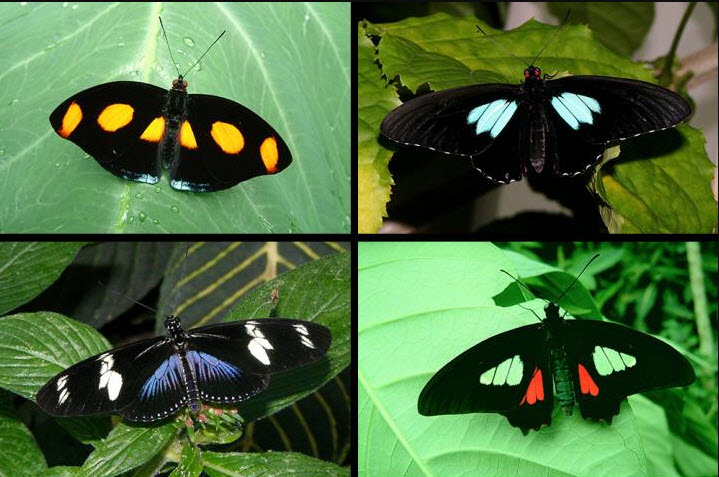Study Reveals 3-D Structure of Ultra-Black Butterfly Wings
Posted on March 10, 2020

A new study has revealed that the ultra-black wings of some butterfly species have a unique 3-D structure. This 3-D structure creates an optical illusion and light-trapping effect that makes the wings appear even blacker than they are.
Duke researchers found that as little as 0.06% of the light that hits these ultra-dark wings is reflected back to the eye. The butterfly scales are just a few microns deep. Light goes into their scales, but very little of it bounces back out.
When these butterfly wings are magnified thousands of times it becomes clear that the wings are covered in scales with a mesh-like surface of ridges and holes that channel light into the scale's spongy interior. The interior contains pillar-like beams of tissue that scatter light until it is absorbed.
This 3-D architecture is so good at swallowing light that the ultra-black scales still looked black even when coated with gold.
Alex Davis, a graduate student in the lab of Duke University biologist Sönke Johnse, says, "You almost can't make them shiny."
These butterfly wings rival today's best light-trapping nanotechnology, while using structures that are only a fraction as thick. The researchers findings could help engineers design thinner ultra-black coatings for applications ranging from military camouflage to lining space telescopes. The research paper can be found in the journal, Nature Communications.

The image above shows butterflies with wings darker than everyday black objects. The butterflies clockwise from top left include Catonephele numilia, Parides iphidamas, Heliconius doris, Parides sp.. The image below provides a close-up look at the wings of the Rajah Brooke's birdwing butterfly.
Top Image: Richard Stickney, Museum of Life and Science
Bottom Image: Alex Davis, Duke University
